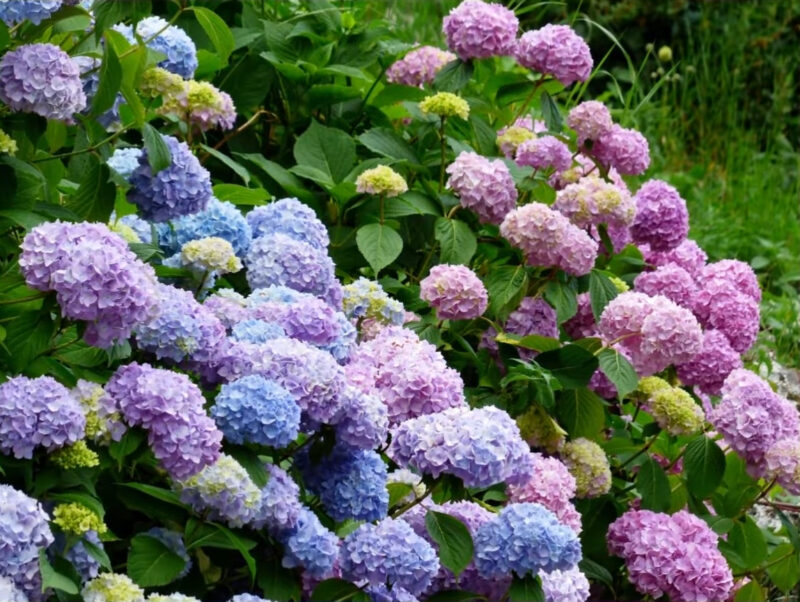Welcome to the colorful world of flowering shrubs! As approach the warmer months of spring and summer, our gardens become a canvas for nature’s vibrant artwork. In this blog post, we’ll explore 10 favorite flowering shrubs that not only bring beauty to your outdoor space but also thrive in these seasons.
Trust me when I say that these selections will add a touch of elegance and charm to your garden.
1. Hydrangea

Hydrangeas are popular in gardens because they have big, colorful flowers. They come in blue, pink, and white, and their colors change depending on the soil. They bloom from spring to summer, so you get lots of pretty colors for a long time.
You can use hydrangeas to decorate the edges of your garden or make them the main attraction. They also look nice in flower arrangements for your home.
To complement these natural hues outdoors, consider embracing innovative interior trends, like the artistic integration of collages, which can reflect the beauty of your garden inside your home.
| Feature | Detail |
| Sun Exposure | Partial shade to full sun |
| Soil Type | Well-drained, moist |
| Bloom Time | Spring to Summer |
| USDA Hardiness Zones | 3-9 |
2. Forsythia

Complementing these natural aesthetics, incorporating contemporary wooden furniture in your garden or patio can enhance the overall charm and functionality of your outdoor space.
| Feature | Detail |
| Sun Exposure | Full sun to partial shade |
| Soil Type | Well-drained, adaptable to various types |
| Bloom Time | Early Spring |
| USDA Hardiness Zones | 5-8 |
3. Azalea
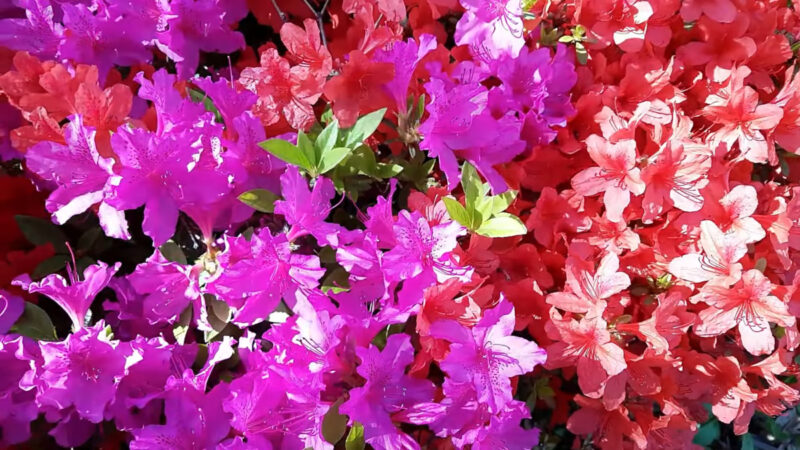
| Feature | Detail |
| Sun Exposure | Partial shade |
| Soil Type | Acidic, well-drained |
| Bloom Time | Spring |
| USDA Hardiness Zones | 4-9 |
4. Lilac
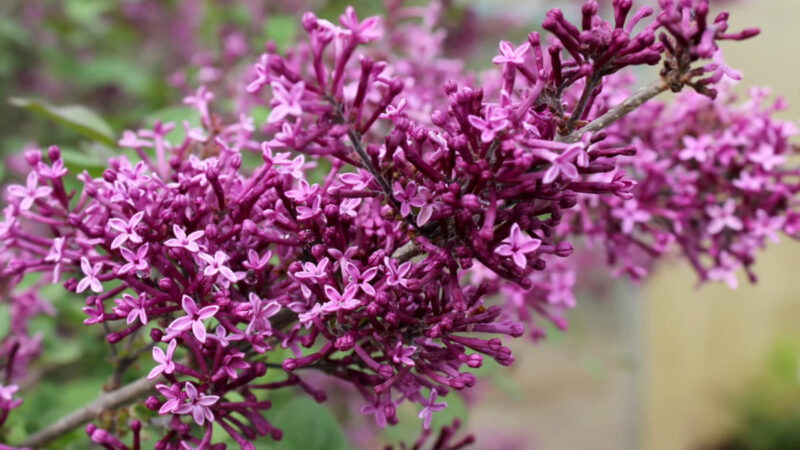
Lilacs are cherished for their fragrant flowers, available in shades of purple, white, and pink. They are perfect for creating aromatic hedges or as standalone specimens in a garden. The fragrance of lilacs is not only pleasant but makes them excellent choices for cut flowers.
| Feature | Detail |
| Sun Exposure | Full sun |
| Soil Type | Well-drained, slightly alkaline to neutral |
| Bloom Time | Spring |
| USDA Hardiness Zones | 3-7 |
5. Camellia
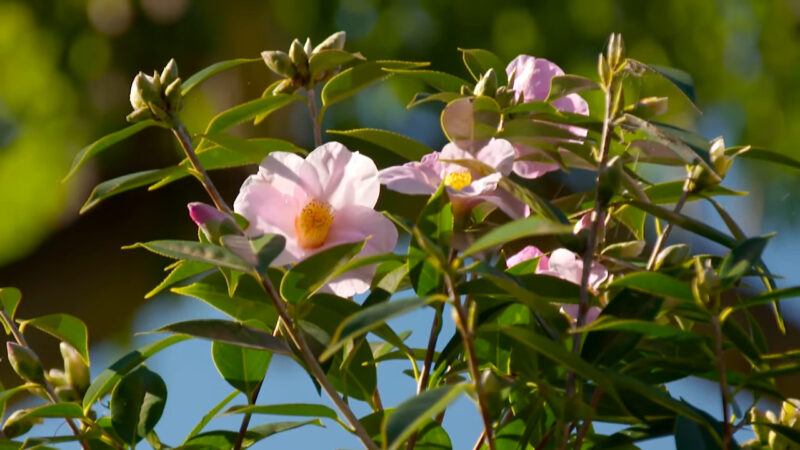
Camellias are renowned for their glossy, dark green leaves and stunning flowers, which range in color from white and pink to deep red. They bloom from late winter to early spring, offering a splash of color when most other plants are dormant. Camellias are perfect for shaded garden areas and can be grown in containers for patio or balcony gardens.
| Feature | Detail |
| Sun Exposure | Partial shade |
| Soil Type | Acidic, well-drained |
| Bloom Time | Late winter to early spring |
| USDA Hardiness Zones | 6-10 |
6. Butterfly Bush
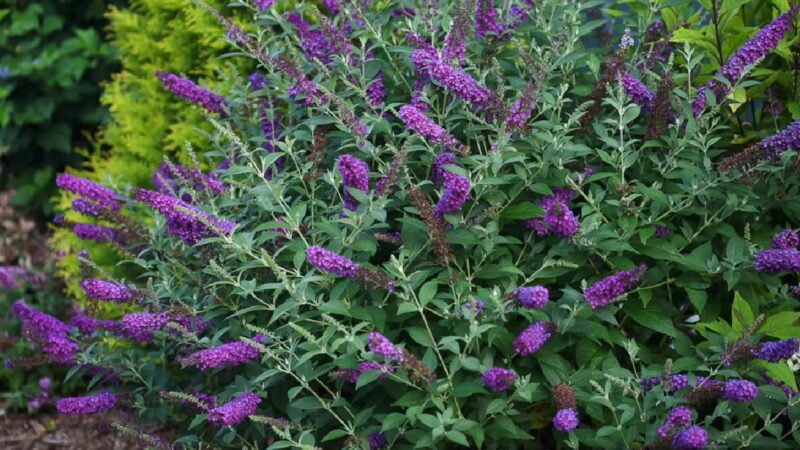
The Butterfly Bush is a magnet for butterflies with its long, conical blooms that come in purple, white, and pink. This shrub loses its leaves in the winter and is a favorite spot for wildlife. It makes gardens look more beautiful with its flowers that appear from summer to fall, keeping your garden vibrant even when other plants stop blooming.
| Feature | Detail |
| Sun Exposure | Full sun |
| Soil Type | Well-drained |
| Bloom Time | Summer to Fall |
| USDA Hardiness Zones | 5-10 |
7. Weigela
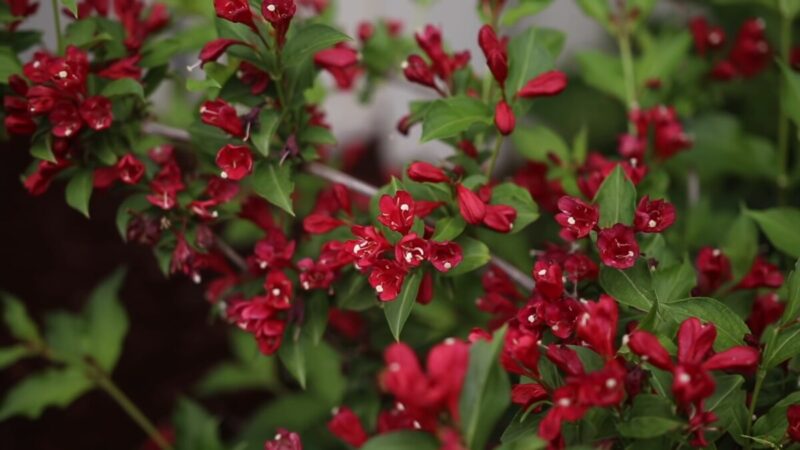
Weigela is celebrated for its trumpet-shaped flowers that attract hummingbirds, available in shades ranging from white and pink to deep red. This easy-to-grow shrub works nicely in mixed borders or by itself. Its bending branches give an elegant shape to garden plans.
| Feature | Detail |
| Sun Exposure | Full sun to partial shade |
| Soil Type | Well-drained |
| Bloom Time | Spring to Summer |
| USDA Hardiness Zones | 4-8 |
8. Rhododendron
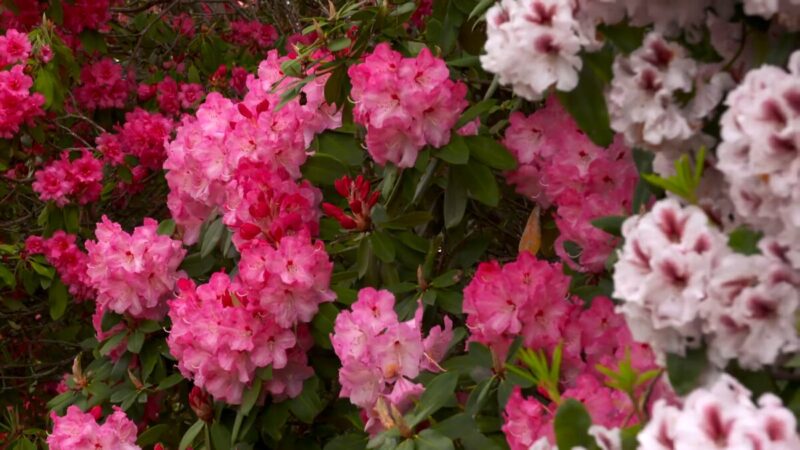
Rhododendrons are known for their large, show-stopping blooms and thick, evergreen leaves. They come in a wide range of colors from white to various shades of pink, red, and purple. These shrubs are excellent for adding structure and year-round interest to gardens.
| Feature | Detail |
| Sun Exposure | Partial shade |
| Soil Type | Acidic, well-drained |
| Bloom Time | Spring |
| USDA Hardiness Zones | 4-8 |
9. Spirea
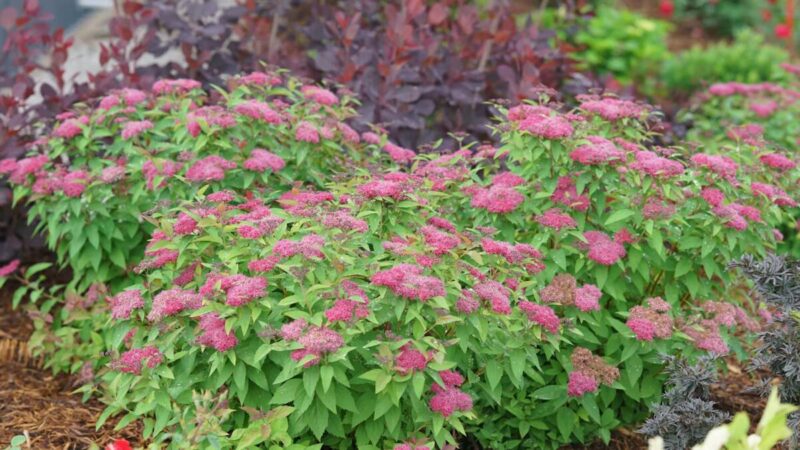
Spireas, with their small, clustered flowers, are a delight for any gardener due to their ease of care. They bloom in shades of pink, white, and red, offering a cheerful display. Their compact size and resilience make them suitable for a variety of garden styles, from formal to cottage gardens.
| Feature | Detail |
| Sun Exposure | Full sun to partial shade |
| Soil Type | Well-drained |
| Bloom Time | Spring to Summer |
| USDA Hardiness Zones | 3-8 |
10. Rose of Sharon (Hibiscus syriacus)
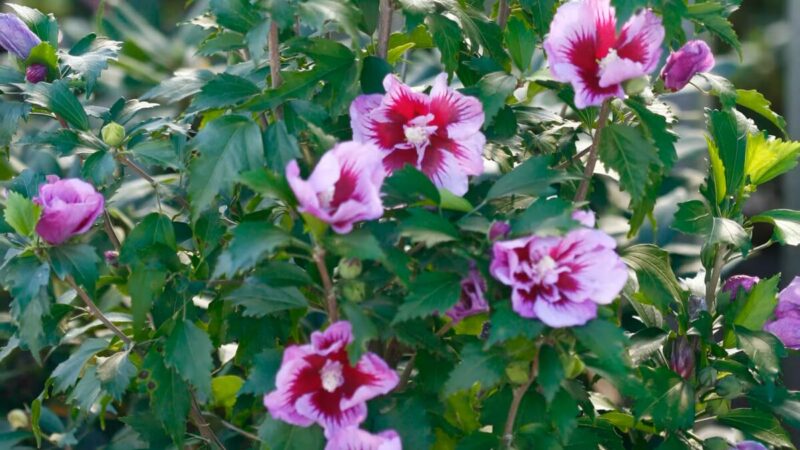
The Rose of Sharon is a late-blooming shrub known for its large, hibiscus-like flowers in shades of white, pink, red, and purple. This versatile shrub can be trained as a small tree or used in hedges. Its late bloom time from summer to fall ensures color in the garden when many other plants have finished blooming.
| Feature | Detail |
| Sun Exposure | Full sun to partial shade |
| Soil Type | Well-drained |
| Bloom Time | Summer to Fall |
| USDA Hardiness Zones | 5-9 |
FAQs
Can flowering shrubs be planted in containers?
Yes, many of them can thrive in containers. This is particularly useful for those with limited garden space or who wish to add floral accents to patios or balconies. When choosing a shrub for a container, consider its growth habit and size.
Smaller varieties or dwarf forms are often more suitable. Ensure the container is large enough to accommodate the shrub’s root system and has adequate drainage.
How do I protect my flowering shrubs from pests and diseases?
Regular monitoring is key to protecting flowering shrubs from pests and diseases. Keep an eye out for signs of infestation or illness, such as discolored leaves, wilting, or visible pests. Use appropriate organic or chemical treatments as needed.
Maintaining healthy plants through proper watering, feeding, and pruning also reduces susceptibility to pests and diseases.
Is it necessary to fertilize flowering shrubs? If so, how often?
Fertilizing flowering shrubs can promote healthier growth and better blooms. The frequency and type of fertilizer depend on the specific shrub and soil conditions. Generally, a balanced, slow-release fertilizer applied in early spring and possibly again in mid-summer is beneficial. Always follow the instructions on the fertilizer’s label.
How much water do flowering shrubs require?
The watering needs of flowering shrubs vary based on the species, climate, and soil conditions. Most flowering shrubs prefer soil that is moist but well-drained. During dry periods, additional watering may be necessary, especially for newly planted shrubs. Over-watering can lead to root rot, so it’s important to allow the soil to dry out slightly between waterings.
When is the best time to prune flowering shrubs?
The best time to prune flowering shrubs depends on their blooming cycle. Shrubs that bloom in spring should be pruned immediately after their flowers fade, as they typically bloom on old wood from the previous season.
Shrubs that bloom in summer or fall, flowering on new growth, can be pruned in late winter or early spring before new growth begins.
Can flowering shrubs attract wildlife to my garden?
Absolutely! Many flowering shrubs are excellent for attracting wildlife such as butterflies, bees, hummingbirds, and even certain bird species. Shrubs with nectar-rich flowers, like Butterfly Bush and Weigela, are particularly attractive to pollinators.
To create a wildlife-friendly garden, choose a variety of shrubs that bloom at different times, providing a continuous source of food throughout the seasons.
Summary
Incorporating these flowering shrubs into your garden not only adds a splash of color but also brings life and vibrancy throughout the warmer months. By choosing the right shrubs for your climate and soil conditions, and following simple care tips, you can enjoy a blooming oasis right in your backyard. Start right away!
